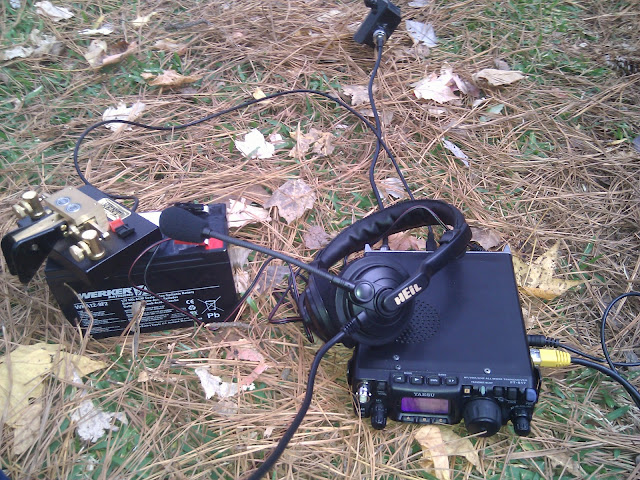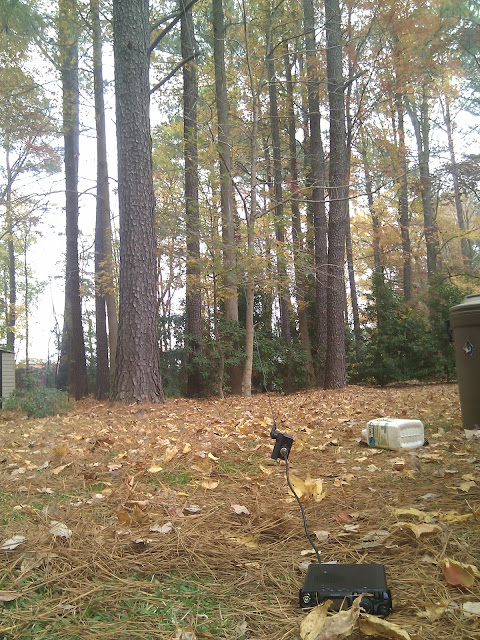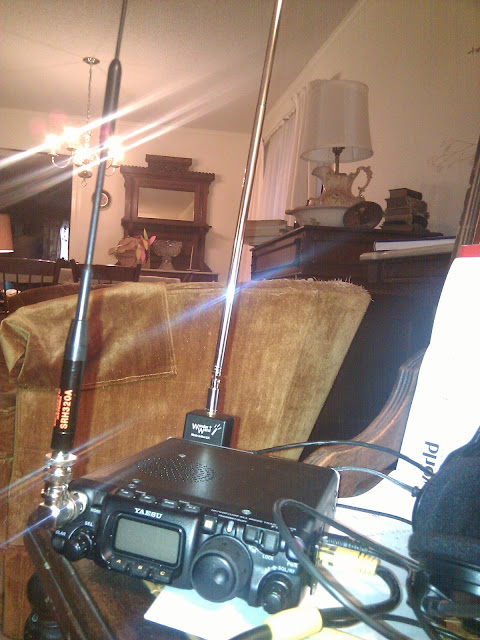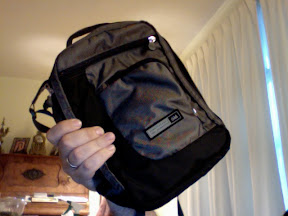Pursuing the perfect “portable” ham radio setup
The joy of amateur radio seems to be to create new engineering problems and then solve them cleverly, thus fulfilling the MacGyver fantasy of every hacker and maker. The reward is the ability to have conversation with other such geeks, and swap stories about how clever you were. About 80% of on-air conversations seem to be about what kind of antenna each party is using, how they got it up, and what sort of equipment they rigged it to.
There seem to be three main types of amateur radio “setups”. The most important is the base station: this is your home base, with your Big Antenna attached to your Big Radio, running into your main “ham shack”. Just as popular, however, seems to be the mobile rig: the radio and antenna you build into your car. Most folks set up UHF/VHF antennas with a range of a few miles, and thus chew the rag with local hams while stuck in slow commutes. Sometimes folks will install much larger 6-8′ antennas on the backs of their cars, so they can do long-distance communication (hundreds of miles) using longer wavelengths… at the expense, of course, of making their car look ridiculous.
Finally, there’s the portable rig. This setup combines with MacGyver fantasy with the Wilderness Explorer fantasy. Put on the hiking boots, sling a tiny pack over your shoulder, then scale a mountain and see how many far-away folks you can reach. Because such tiny radios have tiny batteries, the amount of power they produce is tiny as well. But heck, the lack of power is an attraction — it’s another engineering challenge to overcome, right? 🙂 When you’re running at very low power (5 watts or less), you’re very much at the mercy of the ionosphere. You transmit and hope radio-wave propagation is on your side. This is also why morse code still thrives as a strong subculture within the hobby — despite the fact that it’s no longer required for any license. Morse code propagates extremely efficiently; it’s goes the most distance per watt, and is so much easier to pick out of noise than a human voice.
So where do I stand now, six months into this hobby?
My base rig is great. I have a nice mid-level radio attached to a basic 100 watt end-fed half-wave dipole. It only speaks on a single ham band (40 meters), but this is more than enough for me to make great contacts and practice my skills.
Mobile rig? No way. Not only would my wife kill me if I put a big ugly antenna on the car, it’s probably not safe. If talking on mobile phones while driving is dangerous, it stands to reason that talking to hams is just as bad.
But portable rig, aha! Yes. I go camping a couple times a year (as does my radio mentor), so I’ve been steadily building up a “go pack” for my outdoor adventure reverie. I finally got to test it out when visiting eastern North Carolina this week. Here it is, all unpacked:
The thing is attached to a 40′ wire antenna whose far end I strung up in the air (onto the a 40′ branch of a pine tree):
For indoor use, I can attach a 15″ VHF antenna and a 6′ whip for long wavelengths:
And best of all, everything fits into a tiny little REI mini-pack (except the big battery):
At last, I have a kit that not only works for camping, but can be carried on a plane for my many business trips.
Here are the essential components:
- The radio: a Yaesu 817ND. This amazing little unit can do all amateur HF frequencies, as well as VHF/UHF. So tiny!
- Antennas: for FM UHF/VHF, a Diamond SRH320A whip, or alternately, a 6′ roll-up 2m J-pole from MFJ; for indoor HF, a WonderWand whip; for outdoor HF, a PAR Endfedz 40/20/10m dipole (in a separate grocery bag.)
- For input/output: a Heil Dual-Sided Traveler headset, and Kent TP-1 morse code paddles. If I don’t want the weight of the heavy brass paddles, I have tiny Bulldog BD-1 paddles that magnetically stick to the radio and weigh only an ounce.
- For power: the radio comes with a rechargeable NiMH battery, but it barely lasts an hour or two. Also, the radio has a dirty secret: it claims to do 5W of transmit power, but this only happens when attached to a power supply. When running on internal battery, it only transmits 2.5W. So when indoors, I use a MFJ portable switching power supply (a glorified wallwart) designed just for the 817. When outside, I use a Werker 12V 9AH lead-acid deep-cycle battery, purchased from a Batteries Plus chain store; the battery and the end-fed dipole wire are the only things that don’t fit in the travel bag.
I suppose the result here is that I now also have an “go” bag for emergencies. When the zombie apocalypse comes, I just grab the pack and run!



